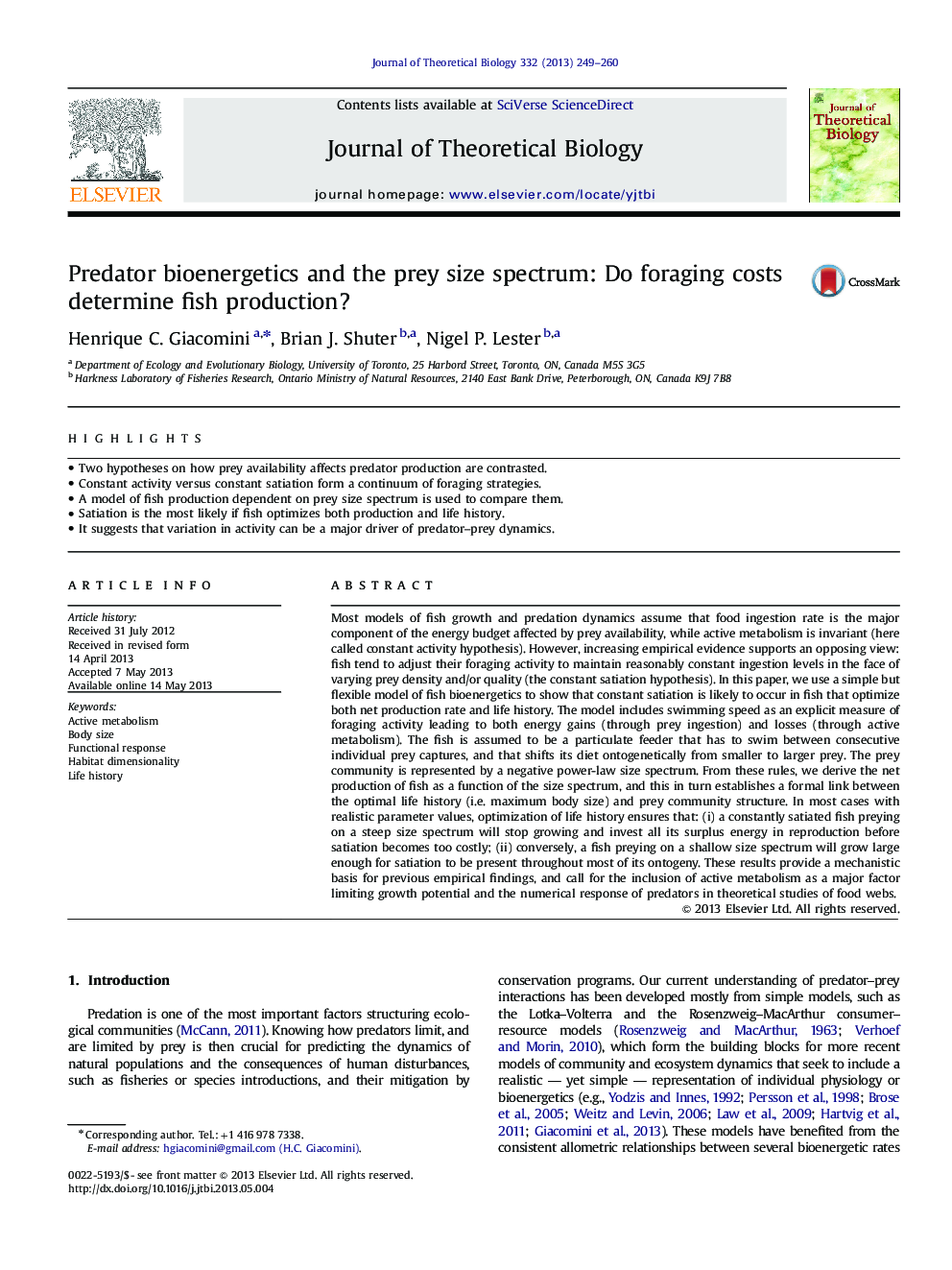| کد مقاله | کد نشریه | سال انتشار | مقاله انگلیسی | نسخه تمام متن |
|---|---|---|---|---|
| 4496353 | 1623878 | 2013 | 12 صفحه PDF | دانلود رایگان |

• Two hypotheses on how prey availability affects predator production are contrasted.
• Constant activity versus constant satiation form a continuum of foraging strategies.
• A model of fish production dependent on prey size spectrum is used to compare them.
• Satiation is the most likely if fish optimizes both production and life history.
• It suggests that variation in activity can be a major driver of predator–prey dynamics.
Most models of fish growth and predation dynamics assume that food ingestion rate is the major component of the energy budget affected by prey availability, while active metabolism is invariant (here called constant activity hypothesis). However, increasing empirical evidence supports an opposing view: fish tend to adjust their foraging activity to maintain reasonably constant ingestion levels in the face of varying prey density and/or quality (the constant satiation hypothesis). In this paper, we use a simple but flexible model of fish bioenergetics to show that constant satiation is likely to occur in fish that optimize both net production rate and life history. The model includes swimming speed as an explicit measure of foraging activity leading to both energy gains (through prey ingestion) and losses (through active metabolism). The fish is assumed to be a particulate feeder that has to swim between consecutive individual prey captures, and that shifts its diet ontogenetically from smaller to larger prey. The prey community is represented by a negative power-law size spectrum. From these rules, we derive the net production of fish as a function of the size spectrum, and this in turn establishes a formal link between the optimal life history (i.e. maximum body size) and prey community structure. In most cases with realistic parameter values, optimization of life history ensures that: (i) a constantly satiated fish preying on a steep size spectrum will stop growing and invest all its surplus energy in reproduction before satiation becomes too costly; (ii) conversely, a fish preying on a shallow size spectrum will grow large enough for satiation to be present throughout most of its ontogeny. These results provide a mechanistic basis for previous empirical findings, and call for the inclusion of active metabolism as a major factor limiting growth potential and the numerical response of predators in theoretical studies of food webs.
Journal: Journal of Theoretical Biology - Volume 332, 7 September 2013, Pages 249–260